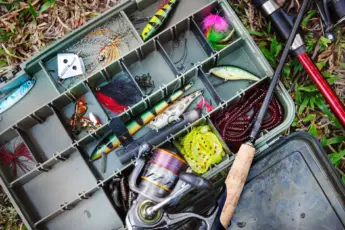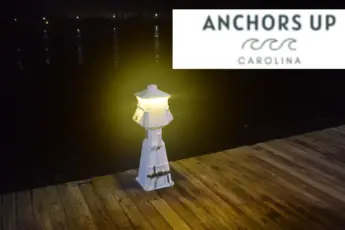Anglers fishing inshore coastal water should pay close attention to tides when fishing. The height of the tide impacts where to target fish. As the tide rises, fish move towards marsh grass and oyster beds. As the tide falls, they find deep pools and wait until the tide rises again. For this reason, it is essential to know where you stand in the tide phase at all times. Continuous adjustments are necessary to keep catching fish. Here is what you need to know about fishing tides.
Slack Tide Is The Most Challenging To Catch Fish
Whether the incoming tide is transitioning to the outgoing tide or the outgoing tide is transitioning to the incoming tide, a slack tide occurs with both.
Fortunately, the transition period is typically short. Therefore, the water stops flowing in or out for a minimal amount of time. However, slack tides highly impact the ability to catch fish.
I would not go as far as to say the fish completely stop biting on slack, but the difference is notable. Most often during slack, I catch throwaway fish. Throwaway fish are the less desirable species.
However, the bite slows both before and after slack tide. I often see lower catch rates at least 30 minutes before and after the tide slackouts. For this reason, it is important to monitor fishing tides.
Without question, you can’t avoid slack tide during every fishing outing in inshore waters. The key is to wait it out until the water starts moving again. Trust me, the bite will turn back on if fish were present before slack. It should be noted that tides minimally impact offshore fishing.
Don’t Get Stuck Make Sure You Know Your Fishing Tides
It is not uncommon for anglers to be on a hot bite and fail to realize the tide is failing rapidly. Unfortunately, boats become stuck in small creeks. In the event, you’re behind the hump of a creek and the tide falls, you’ll be forced to wait to depart until the water rises again.
In addition to moving to locations where fish are present during certain tide phases, be aware of your surroundings. Part of planning fishing tides is knowing when it’s time to head of shallow water before it’s too late.
Track Your Fishing Tides
One of the primary reasons that inshore charter boat captains are so effective at catching fish is because they track patterns.
Without question, fish follow a pattern that is both seasonal and based on tidal phases. For this reason, it is important to track where you are catching fish, the season, and the tide.
I recommend purchasing and carrying a fishing logbook. Undoubtedly, the logbook is perfect for keeping notes and compiling data. Beyond the season and tide, don’t forget to add water temperature, bait, species of fish caught, air temperature, and the time of day.
Importantly, year after year, you can use the log as a guide to help find fish. Of course, it doesn’t mean fish will be in the same spot, but it’s a reference for a starting point to eliminate the guesswork.
Use The Tide To Your Advantage
Using the tide to your advantage is a must when fishing in coastal waters. There are many ways the tide can benefit an angler. Here are the top two ways I use the tide to my advantage when fishing.
Direction Of Flow
No matter if the tide is flowing in or out, use the movement of the water to your advantage. When fishing along structures, oyster beds, or marsh grass, the key is to work the bait or lure across all of it.
Tidal flow is particularly helpful when drifting popping corks with live bait. I cast up current and allow the float to pass within close proximity to grass, structure, or oyster beds. The longer the drift, the more likely you are to find the precise location of the fish. Once I have honed in an area, I will make repeated casts to the same spot.
Marsh Grass And Oyster Beds And Docks
Docks, marsh grass, and oyster beds are safe havens for small fish, including mullet, pinfish, pilchards, and more. However, when small fish are present, big fish are not behind.
Importantly, when the tide falls, water vacates marsh grass in its entirety as it does with oyster beds along the shore. During low tide, casting on creek banks along marsh grass and oyster beds is not an option.
However, on the incoming tide, the grass will become partially submerged along with oyster beds. As the tide comes up, baitfish are swept along the grass and oyster beds, often initiating a feeding frenzy. Predators chase baitfish against structures because it lessens their chance of getting away.
On the incoming tide, be on the lookout of schools of baitfish, cast in the vicinity of the schools to increase your chances of catching fish. Work docks, oyster beds, and marsh grass until the tide falls.
Understanding Fishing Tides Helps You Catch More Fish
I have fished every point of an incoming and outgoing tide. Fishing requires patience because it is learning how to track the location of fish and when they bite. However, once you develop a pattern based on time and season, the challenge of locating and catching fish is less burdening. Lastly, don’t put yourself at risk of getting stuck as the tide falls.








